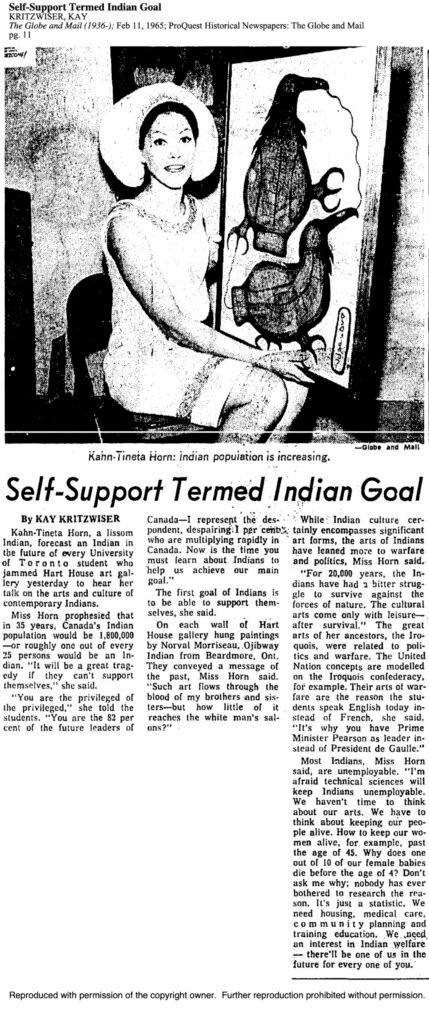
kanien’kehá:ka kahnistensera (Mohawk Mothers)
kahnistensera@riseup.net
November 14, 2022
Update on next steps – Mohawk Mothers vs SQI et al.
Please post & distribute.

On Thursday October 27, 2022 at the Quebec Superior Court, Montreal District, the Kanien’kehá:ka Kahnistensera (Mohawk Mothers) made history as Justice Gregory Moore granted an interlocutory injunction to immediately halt “any excavation in furtherance of the redevelopment of the Allan Memorial Institute or the Royal Victoria Hospital” until the parties have completed discussions regarding the best archaeological practices to be used.

This landmark decision was the first time in Canada that self-represented Indigenous people won an injunction without using attorneys and based on their own governance system, the Kaianerehkowa (Great Peace). In court, the Mohawk Mothers were facing numerous adversaries including top lawyers from McGill University, the Société Québécoise des Infrastructures (SQI), the McGill University Health Center (MUHC), the Royal Victoria Hospital, the City of Montreal, the Attorney General of Canada and the Attorney General of Quebec.
Kimberly Murray, the Independent Special Interlocutor appointed by the Federal government to determine a new legal framework to address the unmarked graves of Indigenous children that are currently found throughout Canada, also joined the case as a “friend of the court”, represented by lawyers Julian N. Falconer and Daniel Worme.
Justice Moore’s court order was issued on the basis of the plaintiffs’ (Mohawk Mothers) concerns that Indigenous children were used as test subjects in medical experiments at the Royal Victoria Hospital and were buried on the site scheduled to be redeveloped. These concerns were based on both archival evidence and witness accounts, including the first-hand account from Lana Ponting, an 81 year old survivor of the CIA-funded MK-Ultra mind control experiments that took place at the Allan Memorial Institute, the Royal Victoria Hospital and McGill University’s department of psychiatry. In addition, the Mohawk Mothers pleaded that the land is the exact location of the precolonial Iroquoian village of Tekanontak (Mount Royal), and was used as a burial site before the arrival of Europeans, which warrants the necessity of using appropriate archaeological means to preserve the history of Iroquoian peoples.
Throughout the hearing on October 26th and 27th, the defendants and promoters of the redevelopment project used an array of technical and legal arguments that attempted to convey the idea that the plaintiffs were
(i) in the wrong forum to lay their claims as other administrative processes exist for such questions in the province of Québec;
(ii) that the promoters have not broken any laws and are respecting the Quebec Heritage Act, which the plaintiffs ask to be declared unconstitutional at the future merits stage of the court proceedings, because it considers Indigenous heritage as the property of Quebec and does not include any mandatory consultation of Indigenous people regarding their heritage;
(iii) that most of the evidence submitted by the plaintiffs and the Special Interlocutor Murray, including the Truth and Reconciliation Commission’s report, was not eligible for technical reasons; and
(iv) that the six plaintiffs did not represent the Mohawk people – which the plaintiffs esteem as there is no “power of attorney” in Indigenous culture, where every individual is free and self-represented.
The Mohawk Mothers emphasized that it is their cultural duty to caretake their traditional territory and the children of past, present and future generations. They also argued that allowing excavation work on the site would cause irreparable harm to their identity, history, and trust as Indigenous people. They also stressed that the situation was urgent because all the other existing means to make their concerns heard were exhausted to no avail. As a matter of fact, the shovels had already broken the ground two days before the hearing with archaeological excavation starting in front of the hospital’s Hersey pavilion – an act which became illegal when the court ruling was issued.
Justice Moore’s ruling, available online, acknowledged that the balance of convenience favored the plaintiffs, who would “suffer irreparable harm if the excavation work is not suspended for the time it takes to develop an appropriate archaeological plan to identify any unmarked graves”, following the best practices determined by the Canadian Archaeological Association. The ruling thus invited the parties to “speak out of court to settle their differences on an amicable basis”. The promoters were reminded of the Royal Victoria Hospital re-qualification project that the Call to Action 76 of the Truth and Reconciliation Commission encourages “public and para-public institutions like McGill University and the SQI” to respect the following guidelines:
“i. the Aboriginal community most affected shall lead the development” of the investigation;
ii. Input must be sought from Survivors and Knowledge Keepers in developing those strategies;
“iii. Aboriginal protocols shall be respected before any invasive technical inspection and investigation of a cemetery site”. The ruling also ordered the defendants to fund the investigation.
Throughout the next months, the Mohawk Mothers will thus be working on developing an archaeological plan which they will submit to the other parties for review one month before the next case management conference with Justice Moore, in January or February 2023. The plan will follow the best practices determined by the Canadian Archaeological Association for searching unmarked graves, drawing on non-damaging remote-sensing technologies to assess what is under the soil without disturbing the remains, and basing the investigation on archival research and interviews with survivors. Kanien’keha:ka longhouse protocols will be followed throughout the process, which will also involve traditional knowledge keepers from other Indigenous peoples, whose own protocols regarding burial sites must also be respected. The Kahnistensera are looking forward to developing a comprehensive archaeological plan which will do justice to their families, ancestors and to all survivors of colonial violence.
The humming of Sam Cooke’s “It’s been a long time coming/ But I know a change is gonna come” resonates across Tekanontak, as the Kahnistensera’s legal endeavor makes changes for the children yet to come never to be denied anymore. Fear will be overcome, and the path will be cleared for Onkwehonwe to live in peace on their our land, as creation intended.
Kanien’keha:ka Kahnistensera, Kahnawake
kahnistensera@riseup.net
To help the Kahnistensera, donations can be provided at the following address: https://mohawknationnews.com/blog/2022/09/17/help-the-mohawk-mothers-protect-unmarked-graves-audio/
More articles on the court hearings:
McGill Tribune – Tuesday Nov. 1, 2022
APTN News – Friday, Oct. 28th, 2022
Eastern Door – Friday, Oct. 28th, 2022
Eastern Door – Monday, Nov. 7th, 2022
CBC News – Friday, Oct. 28th, 2022
ICI Radio-Canada – Vendredi 28 octobre 2022 (Fr)
Le Devoir – Mardi 1er novembre 2022 (Fr)
City News – Wednesday, Nov. 2nd, 2022.






